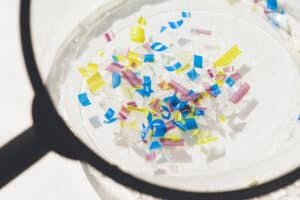Like most things, medicine has changed a lot throughout history too. What was thought to be healthy decades ago turned out to be super dangerous. If we think about it, even the definition of being healthy and living longer was different than we know it today.
Nowadays, being healthy implies a plethora of activities and lifestyle changes such as diet, exercising, and proper sleep. For most of us, it is pretty shocking to find out that mercury, for instance, was actually used as a treatment for syphilis. This is just an example, so arm yourself with patience because it’s going to be a long ride, just like the ice picks used for lobotomy.

Radioactive drinks
Did you know that in the early 1900s, most people actually thought that radioactivity is good for them? As crazy as it may sound to you, radioactive water was pretty popular back then. And not just radioactive water but radium pendants, anti-aging radioactive cosmetics, uranium blankets used for arthritis treatments, and many more.
This trend emerged when radioactive traces were discovered in hot springs, so people assumed that they must be good too, since hot springs were thought to have healing properties. And that’s how radioactive water was marketed.
The supposedly healthy drink, Radithor, was even promoted by a famous athlete and industrialist, Ebenezer McBurney Byers, who claimed to drink even three bottles a day. Unsurprisingly, his early death was caused by radiation-induced cancers.
Shark cartilage
There’s a lot of controversy regarding the use of shark cartilage as a treatment for cancer. Sharks have been studied for more than three decades for medical purposes. And, at some point, it was actually believed that shark cartilage could be a possible treatment for one of the deadliest health conditions, namely cancer.
A famous surgeon in the 1950s, John Prudden, started investigating the use of shark cartilage as a potential medical treatment. He claimed that he was able to shrink tumors in size and even treat cancers only by using animal cartilage.
Although these findings were never repeated or reinvestigated by someone else, after the launch of a book, “Sharks Don’t Get Cancer,” shark cartilage became instantly popular in alternative medicine. Still, no scientific evidence supports these claims.
Plus, even the idea of “sharks don’t get cancer” was smashed into pieces since there have been more than 42 cases of sharks with tumors.
Hero*n cough suppressant
When her*in was discovered, it was literally prescribed as cough medicine. The syrup was created by Bayer Laboratories back in 1898. It was even marketed towards children. It wasn’t until 1924 that the FDA realized that people shouldn’t ingest a powerful opiate to treat a minor cough.
Soon after showing signs of addiction (around 1899), the government decided that people should get it only with a prescription. The problem was they actually waited until 1914 to do so. Basically, it was a 15-year gap in which everyone could easily get their hands on a bottle of her*in syrup.
Now we know that her*in is one of the most addictive and harmful drugs in the world, but who knows how many people became addicted to heroin due to this cough suppressant.
Bloodletting
Have you ever heard of bloodletting? Well, it was basically a medical procedure used to help alleviate those who struggled with pneumonia, rheumatism, fevers, headaches, back pain, and even melancholia. As the name suggests, bloodletting is literally the withdrawal of blood from a patient in order to cure or prevent certain illnesses and diseases.
Originating from ancient Egyptians, bloodletting has stood the test of time, still being used in today’s medicine, but, of course, with the use of modern techniques and instruments.
Fun fact: Even barbers used to make this procedure back then, and if you ever asked yourself why is the barber pole red, white, and blue, it’s actually because red represents the color of the blood, white, the bandages, and blue the color of the veins.
Mercury
Mercury, the naturally occurring chemical, was actually a remedy of choice for syphilis back in the 1500s. The person who “introduced” it as a treatment of syphilis was a Scottish surgeon named John Hunter. He claimed that he managed to cure himself of this sexually transmitted disease only by using mercury.
Little did he know, as it turned out, that syphilis strikes in three phases and that each phase has remission periods which can last up to three years. Doctors think that these remission periods were most likely responsible for Hunter’s claims.
However, mercury continued to be used in various illnesses until the early 20th century.

Tobacco
The first use of tobacco was recorded with the indigenous people of the New World. Firstly, it was used for pleasure, but not too long after that, tobacco was thought to have medicinal properties. From relieving colds and headaches to disinfecting and keeping fatigue and certain diseases at bay, smoking was believed to treat numerous health issues.
In fact, it was even used as an anesthetic. It was soon known as God’s remedy or holy herb. In India, for example, people believed that tobacco was super beneficial for teeth health; therefore, they used it as toothpaste. Luckily, now we know how harmful tobacco can be since it was even linked to several types of cancers and not only.
Lobotomy
The first lobotomy on a human was performed in the 1890s because this dangerous procedure was actually thought to be a cure for certain mental illnesses. At the peak of its popularity, namely between the 1940s and 50s, this procedure was performed on more than 40,000 Americans.
The American physician who specialized in lobotomy, Walter Freeman, developed a method commonly known among doctors as a transorbital lobotomy, a.k.a. ice-pick lobotomy. His method consisted of using electroshocks to make the patient unconscious and then using an instrument that resembled an ice-pick to make a hole above the eyeball.
As soon as the ice-pick reached the brain, the instrument should have been moved back and forth in order to destroy neural pathways. However, even if lobotomy is rarely mentioned nowadays (maybe in movies, let’s say), the practice is still used today but in rare cases, and, of course, the procedure is different than it used to be.
LSD therapy
Speaking of drugs… Were you aware of the fact that LSD was actually used to cure criminal behavior, alcoholism, and even schizophrenia? First made by Albert Hofmann in 1938 from lysergic acid, a chemical derived from ergot, a fungus that grows on rye and other grains.
Its use became prevalent between the 1950s and early 60s. And although we all know that LSD is a powerful hallucinogenic drug, it seems that some people still believe in its powerful “properties.”
Some Norwegian researchers actually want to continue the studies on LSD. And yes, LSD is used as a therapeutic treatment in some countries, but it is actually administrated under close supervision in a safe environment like a psychologist’s office. In our country, LSD became illegal in 1966. In addition, all research into the drug’s medical uses stopped the same year.

Tapeworms
In the early 50s, people started infecting themselves with flat, segmented worms that actually live in certain animals’ intestines to lose weight. *People did some crazy things just to be in shape throughout history… It was even a weight-loss trend that consisted of taking sedatives to sleep like a baby (as many as 20 hours a day) in order to avoid eating.
So, indulging tapeworms in the name of shaping up shouldn’t be that surprising after all. They “knew” what they were doing since the whole idea of having a tapeworm inside your stomach was to lose weight because the worm consumed everything you eat.
Unsurprisingly, several health concerns appeared after ingesting tapeworms, such as headaches, diarrhea, bloating, weakness, abdominal pain, constipation, and vitamin deficiencies – and still, all of these weren’t the worse… Sometimes, tapeworms needed a “vacation,” heading to your brain, which, of course, could have had deadly results.
Bear in mind that you could end up with a “friendly” tapeworm inside of you without even realizing it. Consuming raw fish and meat, for instance, increases your chances of getting infected. There are six types of tapeworms known to infect humans, and they are usually identified based on the animals they come from.
So if you experience constant abdominal pain, fatigue, weakness, weight loss, and nausea, call your doctor, especially if you’ve been to undeveloped countries recently.
Coc*ine
The Devil’s dandruff, Peruvian marching powder, nose candy, whatever you want to call it, cocai*e was actually included in many types of medicines and drugs (not only in the soft drink called Coca-Cola). Due to its energizing effects, people believed that cocai*e should be part of a healthy lifestyle. So, in the latter part of the 19th century and early 20th century, cocai*e was actually promoted as a miracle drug.
It was even praised by some popular figures in medical history (surgeon William Halsted and even Sigmund Freud). According to history buffs, Freud even mentioned this “wonder drug” in a letter he wrote for his wife, saying that he takes a dose regularly against indigestion and depression.
Well, today’s medicine would strongly disagree with Freud‘s beliefs since this powerful drug can damage your heart and brain irreversibly.
Curious to know more health-related fun facts? Then you should also read: 11 Completely Bizarre Spa Treatments You Won’t Believe Are Real













